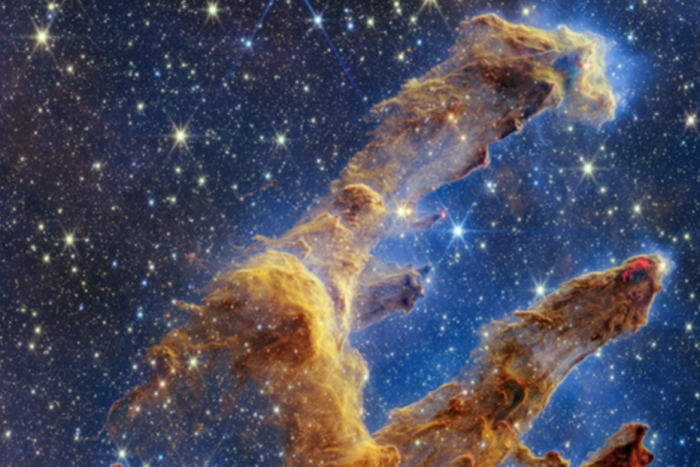The brilliance of thousands of stars shines on the image on which the giant brown-and-orange pillars of infinite outer space stand. In its announcement, NASA wrote that intense red regions, reminiscent of lava, appear at the end of each plume point for stars born inside the plumes that are only a few hundred thousand years old.
The Crowns of Creation are located 6,500 light-years from Earth in the Milky Way. The gas and dust plumes owe their fame to the Hubble Space Telescope, which took pictures of them in 1995 and again in 2014.
However, the James Webb Telescope, which was launched into space less than a year ago, can use infrared cameras to penetrate the opaque part of the pillars and see many young stars, which appear in the image as bright red balls.
Source: NASA, ESA, CSA, STScI; Joseph DePasquale (STScI), Anton M. Coquemore (STScI), Alyssa Pagan (STScI)
The recording, which outlines an area of about eight light-years across, was made by the telescope using a near-infrared spectrophotometer called NIRCam, which is based on wavelengths invisible to the human eye.
According to NASA, the new recording will help scientists revise their models of star formation, to more accurately determine the number of newly born stars, as well as the amount of gas and dust in the region.
James Webb, whose first color photos were published in July, is making observations 1.5 million kilometers from Earth. A major task of the ten billion dollar equipment is to study the life cycle of stars. Another important research goal is the study of planets outside the solar system, the so-called exoplanets.












































